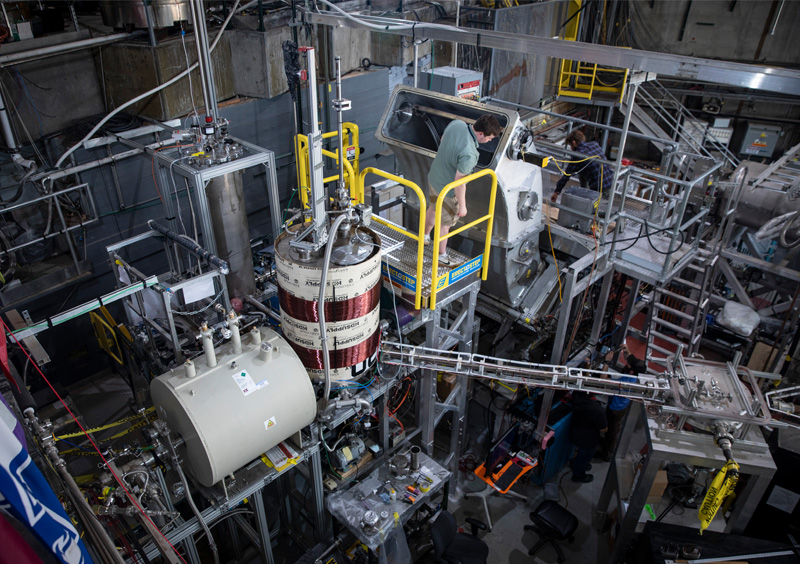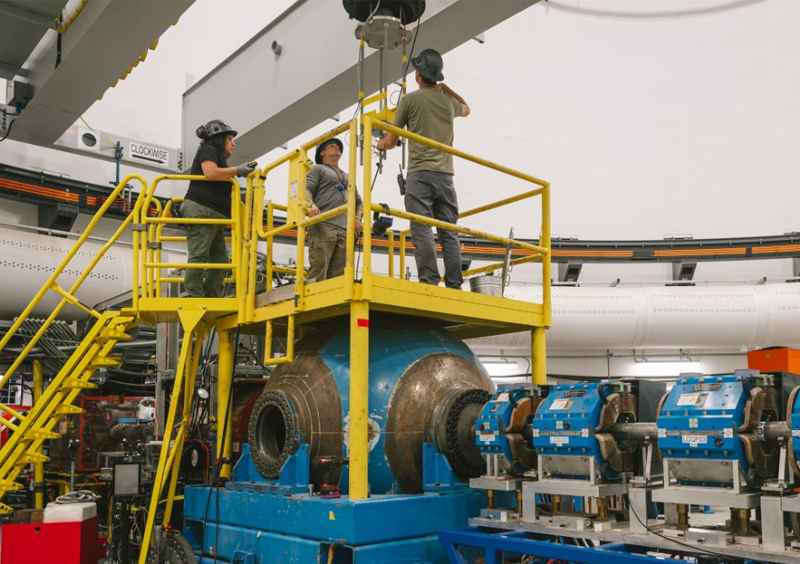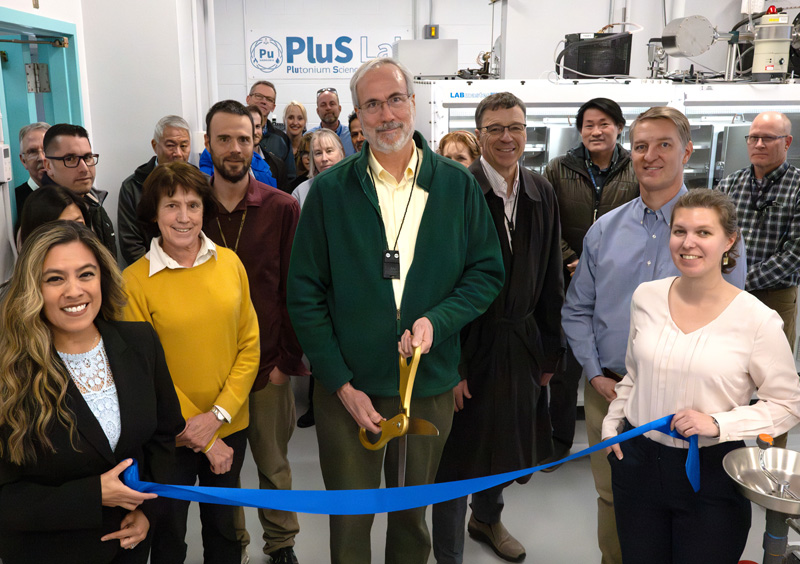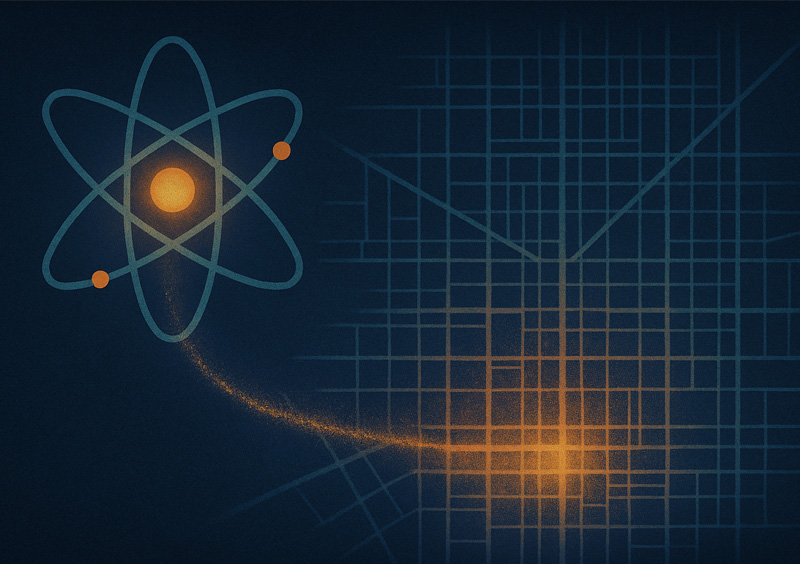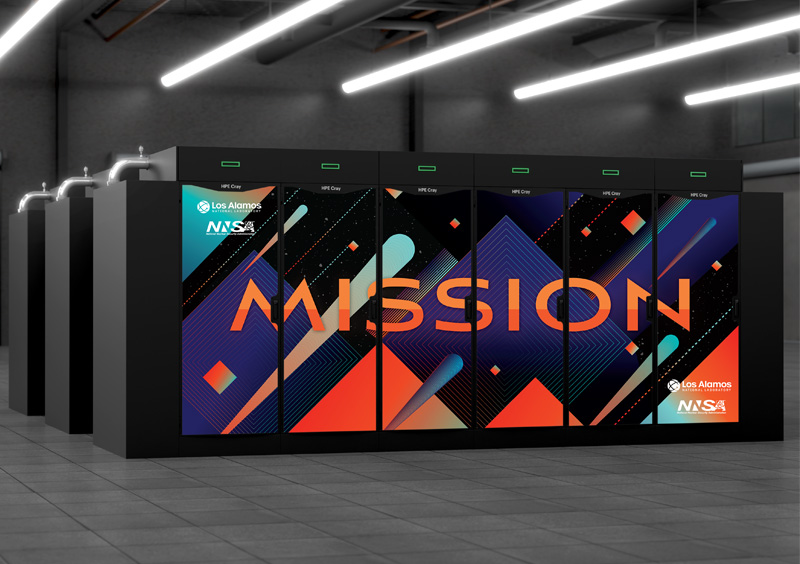Incorporated into every aspect of everyday life, the neutron is a fundamental particle of nature. Now, a research collaboration led by Los Alamos National Laboratory has improved the precision of free neutron lifetime measurements. The team’s results highlight the success of the UCNTau experiment’s design and previews the effectiveness of new techniques and approaches that the team is incorporating into the next generation of the experiment.
“The precise lifetime of free neutrons is at the center of still-contested physics questions,” said Steven Clayton, physicist at Los Alamos. “Understanding the neutron lifetime can be used to test the nature of the weak force, one of the fundamental forces of the universe, and can also help search for physics beyond the Standard Model. Our results here validate the UCNtau experimental approach and point the way toward design improvements that will further enhance our understanding of the physics involved.”
The team’s new analysis, described in Physical Review C, incorporates three more years of data collection from the experiment at the Ultracold Neutron Facility at the Los Alamos Neutron Science Center, with accuracy bolstered by improvements in the systematic design of the experiment. The results update the understanding of the neutron’s lifetime to 877.83 seconds, with uncertainty reduced to under 0.3 seconds.
Explore what it's like to live and work in Northern New Mexico
Bathtub design delivers consistent results
The UCNtau experimental apparatus — UCN stands for “ultracold neutrons” and tau is the symbol for a particle lifetime — works as a magneto-gravitational trap, resembling a bathtub whose concave surface is covered in magnets and open at the top. A variation of a “bottle” trap, the UCNtau experiment stands in contrast to the “beam” approach employed by some neutron lifetime experiments. The approaches have resulted in different measurements of the neutron lifetime, with the “neutron lifetime puzzle” dividing the physics community around the possibility that a flaw in either of the experimental approaches may explain the discrepancy.
The UCNtau bathtub is filled with ultracold neutrons slowed down cryogenically so they can be counted when they interact with a detector lowered into the bathtub. To prevent neutron loss, magnets on the interior surfaces prevent neutrons from leaking through the surface, and gravity keeps the neutrons from spilling over the high tub walls. Neutrons are counted when a zinc-sulfide detector coated with boron-10 descends into the bathtub; the neutrons are absorbed by the boron-10 coating on the zinc-sulfide detector and the excess energy causes the boron-10 nucleus to break apart, with a fragment pinging on the zinc-sulfide and producing a detectable — and countable — display of light.
To fine tune accuracy, the UCNTau team updated the apparatus every year as it took data, including improving monitoring of how many neutrons are initially loaded into the trap and the accuracy of counting surviving neutrons in the trap after being held for some time. The consistency of the recent data with the team’s earlier results validates the experiment’s design. Averaging the results from the five years of total run, the team arrived at the new measurement of 877.83 seconds. That figure includes an error estimate of less than 0.3 seconds.
“The results represent the most precise measurement of the neutron lifetime to date,” Clayton said. “Our goals have been to better understand and quantify systematic uncertainties in the experiment and to improve the lifetime statistical precision. With this level of precision, we’ve taken the current design as far as it can go.”
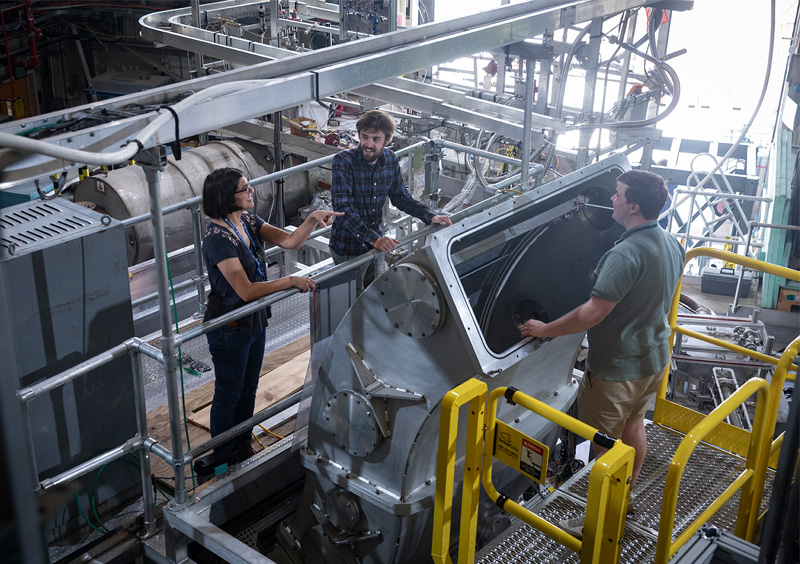
UCNTau+ represents next generation of experiment
For its next run of data, the research team has turned its attention to significantly increasing the capacity of the experimental apparatus — an iteration of the experiment the team is calling “UCNTau+.” The team is modifying the method of filling the trap to increase the density of ultracold neutrons by a factor of between 5 and 10 while also improving the detector system to reduce the largest systematic uncertainty by a factor of 10 — to a goal overall uncertainty of 0.1 seconds.
The team is ensuring counting accuracy by developing a new UCN detector with a scintillator based on a perovskite material that can be made to provide similar light output but without the long fluorescence trail found with the current scintillator. At the center of the effort to deliver more neutron density is a newly installed “elevator” that loads neutrons into the bathtub, swinging forward and down into the trap. Fabricated from copper and Teflon, useful for reflecting neutrons to prevent leakage through the metal, the elevator can deliver a larger load of neutrons down into the trap. The elevator was designed and fabricated in collaboration with the University of Illinois Champaign-Urbana.
“The elevator itself was challenging to design and execute because it has to form a seal as it backs up, and we needed any gaps to be reasonable,” said Maninder Singh, Los Alamos postdoctoral researcher on the UCNTau team. “Elevator transport has been done before but not at this scale, and not with this geometry, where the elevator is to move other than straight up and down. Implementing this technique has been an exciting challenge.”
The team hopes to bring UCNTau+ online this summer to begin taking data.
Take a closer look at the UCNTau experiment in the photo gallery.
Paper: “Measurement of the free neutron lifetime in a magneto-gravitational trap with in situ detection.” Physical Review C. DOI: 10.1103/PhysRevC.111.045501
Funding: This work was supported by the Laboratory Directed Research and Development program at Los Alamos and the U.S. Department of Energy Office of Science, Office of Nuclear Physics.
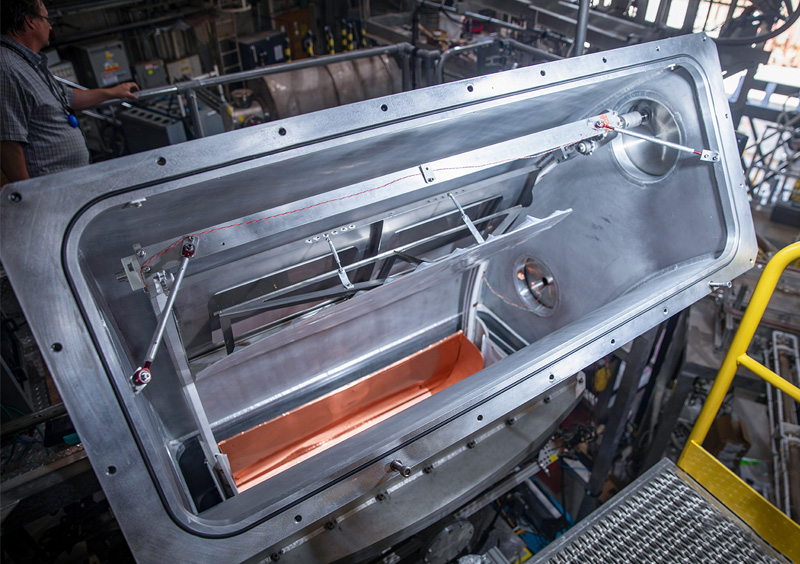
LA-UR-25-26458
More Los Alamos science:
Team finds a new path toward quantum machine learning
Plants react differently to drought than expected
How Los Alamos is addressing "forever chemicals" known as PFAS
